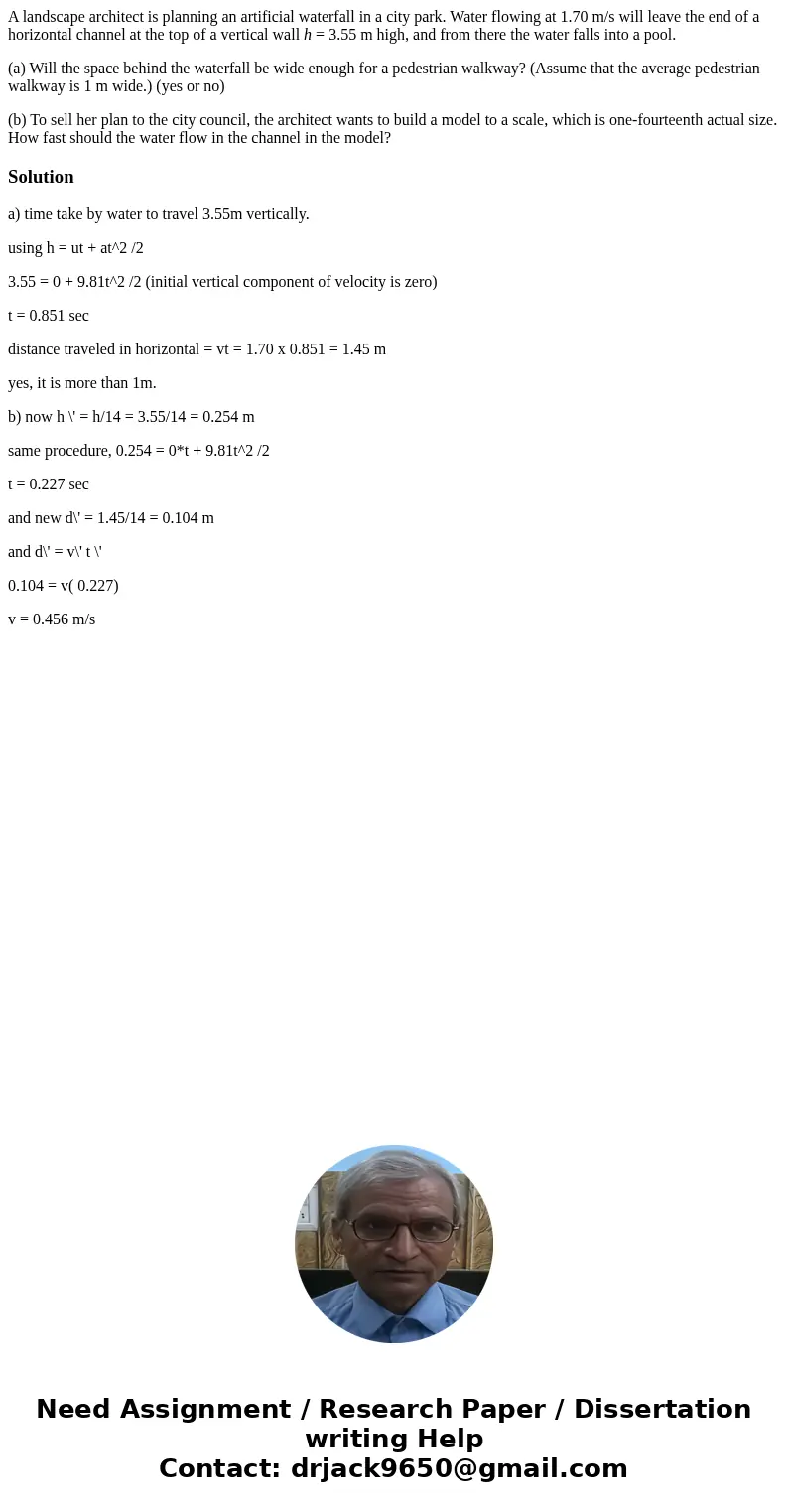A landscape architect is planning an artificial waterfall in
A landscape architect is planning an artificial waterfall in a city park. Water flowing at 1.70 m/s will leave the end of a horizontal channel at the top of a vertical wall h = 3.55 m high, and from there the water falls into a pool.
(a) Will the space behind the waterfall be wide enough for a pedestrian walkway? (Assume that the average pedestrian walkway is 1 m wide.) (yes or no)
(b) To sell her plan to the city council, the architect wants to build a model to a scale, which is one-fourteenth actual size. How fast should the water flow in the channel in the model?
Solution
a) time take by water to travel 3.55m vertically.
using h = ut + at^2 /2
3.55 = 0 + 9.81t^2 /2 (initial vertical component of velocity is zero)
t = 0.851 sec
distance traveled in horizontal = vt = 1.70 x 0.851 = 1.45 m
yes, it is more than 1m.
b) now h \' = h/14 = 3.55/14 = 0.254 m
same procedure, 0.254 = 0*t + 9.81t^2 /2
t = 0.227 sec
and new d\' = 1.45/14 = 0.104 m
and d\' = v\' t \'
0.104 = v( 0.227)
v = 0.456 m/s

 Homework Sourse
Homework Sourse